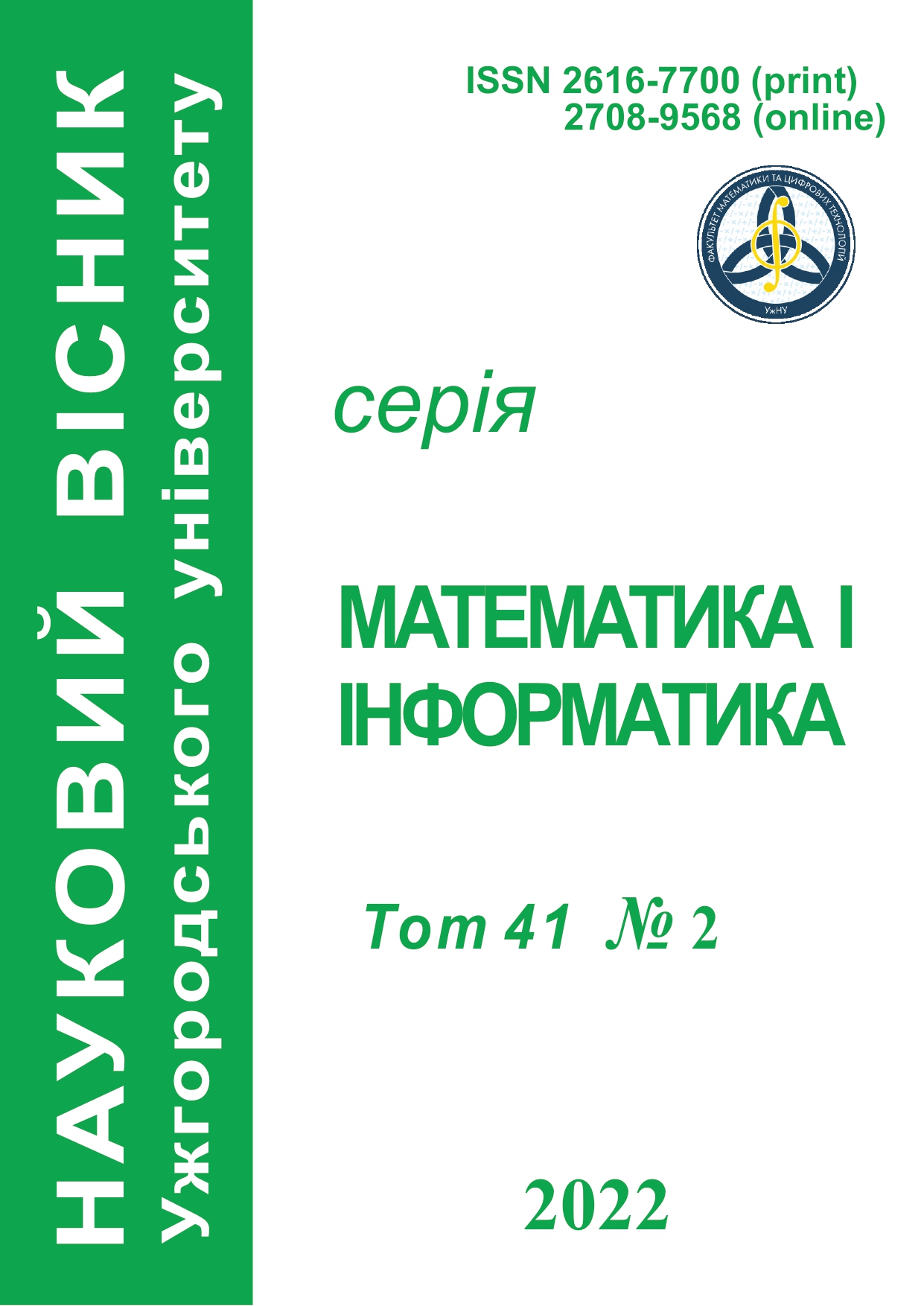Модель багатокритеріального вибору науковців та ЗВО для організації наукової співпраці
DOI:
https://doi.org/10.24144/2616-7700.2022.41(2).7-15Ключові слова:
наукові дослідження, партнерство, задача вибор, нечіткий логічний вивідАнотація
В дослідженні сформульовано задачу вибору потенційних партнерів для співпраці в рамках наукових та освітніх проєктів. Розглянуто постановку задачі в якій кожен проєкт складається зі скінченого числа робочих пакетів.
Для знаходження узагальнених агрегованих оцінок претендентів застосовано систему нечіткого логічного виводу, який будується для узгодження думок експертів щодо створення проектних груп. Даний метод складається із трьох етапів. На першому етапі фазифікація здійснюється через введення функції належності науковця до напрямку наукових досліджень. Другий етап нечіткого логічного виводу полягає формуванні експертами вимог до кандидатів на місце в проектній групі. На заключному етапі відбувається дефазифікація за допомогою методу центра ваги
Посилання
- Xu, H. & Andrashko, Yu. (2019). The problem of partnership choices for scientific projects cooperation. Management of development of complex systems, 37, 111 – 115.
- Biloshchytskyi, A., Kuchansky, A., Andrashko, Y., Biloshchytska, S., Kuzka, O., Shabala, Y., & Lyashchenko, T. (2017). A method for the identification of scientists’ research areas based on a cluster analysis of scientific publications. Eastern-European Journal of Enterprise Technologies, 5(2(89)), 4–11. https://doi.org/10.15587/1729-4061.2017.112323
- Biloshchytskyi, A., Kuchansky, A., Andrashko, Y., Biloshchytska, S., Kuzka, O., & Terentyev О. (2017). Evaluation methods of the results of scientific research activity of scientists based on the analysis of publication citations. Eastern-European Journal of Enterprise Technologies, 3(2(87)), 4–10. https://doi.org/10.15587/1729-4061.2017.103651
- Kuchansky, A., Andrashko, Y., Biloshchytskyi, A., Danchenko, E., Ilarionov, O., Vatskel, I., & Honcharenko, T. (2018). The method for evaluation of educational environment subjects’ performance based on the calculation of volumes of msimplexes. Eastern-European Journal of Enterprise Technologies, 2(4(92)), 15–25. https://doi.org/10.15587/1729-4061.2018.126287
- Kretschmer, H. (1985). Cooperation structure, group size and productivity in research groups. Scientometrics, 7, 39-53. https://doi.org/10.1007/BF02020140
- Wagner, C.S., & Leydesdorff, L. (2005). Network structure, self-organization, and the growth of international collaboration in science, Research Policy, 34(10), 1608–1618. https://doi.org/10.1016/j.respol.2005.08.002
- Xu, H., & Kuchansky, A. (2019). The problem of choise of partners for organization of cooperation in the framework of scientist of scientific and educational projects. Scientific Bulletin of Uzhhorod University. Series of Mathematics and Informatics, 2(35), 134–142. https://doi.org/10.24144/2616-7700.2019.2(35).134-142
- Godin, B., & Gingras, Y. (2000). Impact of collaborative research on academic science. Science and Public Policy, 27(1), 65–73. https://doi.org/10.3152/147154300781782147
##submission.downloads##
Опубліковано
Як цитувати
Номер
Розділ
Ліцензія
Авторське право (c) 2022 А. О. Білощицький, Ю. В. Андрашко, О. Ю. Кучанський, А. Р. Файзуллін, С. Н. Токсанов

Ця робота ліцензується відповідно до Creative Commons Attribution 4.0 International License.
Автори залишають за собою право на авторство своєї роботи та передають журналу право першої публікації цієї роботи на умовах ліцензії Creative Commons Attribution License, котра дозволяє іншим особам вільно розповсюджувати опубліковану роботу з обов'язковим посиланням на авторів оригінальної роботи та першу публікацію роботи у цьому журналі.








